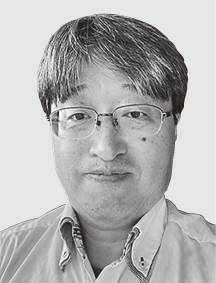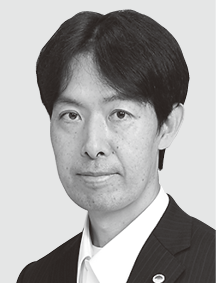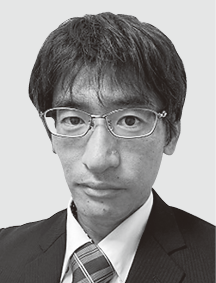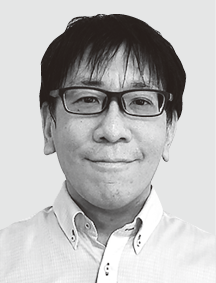Pollution, scarcity, and the uneven distribution of resources, the growing challenges associated with water across the world, call for rapid action in order to protect the environment. Hitachi Group, meanwhile, has been engaging in collaborative creation with customers and other business partners as it strives to maintain and improve water infrastructure and the environment through the development and supply of solutions that facilitate data use, decarbonization, and resource efficiency. This section describes platforms for making the transition to a sustainable society, covering the latest water infrastructure solutions from Hitachi Group for ports as well as for water and wastewater services.




Water is one of the most important circulating resources on a global scale and is also a key part of the social infrastructure that is indispensable for sustaining human life. However, the world is faced with various issues such as uneven distribution of water resources, droughts, floods, and water pollution. In Japan, water supply and sewage facilities and pipes are deteriorating with age, the fiscal budgets available for maintaining and managing them are tight, and measures are required for ever more severe disasters. The United Nations has set up “Goal 6: Ensure the availability and sustainable management of water and sanitation for all” in its Sustainable Development Goals (SDGs)(1) and has set other water-related targets to be achieved by 2030.
Against this backdrop, the Hitachi Group announced its new Mid-term Management Plan 2024 in April 2022 in which Hitachi will support the planetary boundaries, which protect the Earth and sustains society, and well-being, a society in which each individual is comfortable playing an active role, through Green, Digital, Innovation and Lumada* initiatives. Specifically, Hitachi intends to continue to accelerate and develop its Social Innovation Business to innovate the urban and industrial sectors. This article presents the products, systems, and services (water infrastructure solutions) that support the water infrastructure sector, which plays a key role in this effort.
The amount of freshwater that people can use for drinking and daily life is thought to be 0.01% of the total water on the Earth, which is unevenly distributed on a global scale, and floods and droughts, which are thought to be the effects of climate change, occur frequently. The Ministry of Economy, Trade and Industry prepared a report on the 10-year review of overseas development measures for the water business and the direction of future development, and published it in March 2021(2). The market size of the water business is expected to exceed JPY110 trillion by 2030, but the market is expanding and diversifying, and the report stated that public-private cooperation and the use of partnerships are needed in order to prepare projects in partner countries.
In Japan, on the other hand, the percentage of the population with access to drinking water will reach 98.1% by the end of FY2020, and the population with access to sewage treatment (sewage system, agricultural community drainage facilities, septic tanks, etc.) will reach 92.1%(3), (4), and at the same time, the market for water supply and sewage facilities is shifting from new construction to updates. However, administrators are facing many issues, such as tight budgets for local governments, fewer available skilled staff, and a drop in water demand due to a shrinking population.
In response, the Ministry of Health, Labour and Welfare (MHLW) presented its New Water Supply Vision in 2013 and the Ministry of Land, Infrastructure, Transport and Tourism (MLIT) presented its New Sewerage Vision in 2014. Also, in October 2019, the revised Water Supply Act came into effect, which includes the implementation of wide-area cooperation in waterworks infrastructure projects, appropriate asset management, public-private partnerships, and the obligation to create a record of waterworks facilities(5). Furthermore, following an organizational review of the MHLW, it was announced that the administration of waterworks infrastructure development and management would be transferred to the MLIT and the Ministry of the Environment in September 2022. This is the first major change in jurisdiction in 65 years, and observers will watch closely for any changes in trends from 2024.
Hitachi Group has long been working to solve problems in various water infrastructure sectors, including the conservation of water resources, flood control and water use, municipal and industrial water supply, sewage and industrial wastewater treatment, and water production and recycling. It intends to contribute to comprehensive problem solving and overall optimization not only through its individual products and services, but also by proposing water infrastructure solutions that link them all together.
In recent years, digital technology has been increasingly used in the water infrastructure sector, and Hitachi Group has been implementing the use and application of information and control technology in the water infrastructure sector. For example, it continues to provide simulation technology to support planning and management and to provide maintenance, monitoring, and control systems for water treatment facilities and pipes. In the process of proposing various solutions, the digital technology that has been developed in the water sector is increasingly being applied to other infrastructures and vice versa. Figure 1 shows the main technologies, products, systems, and services that support solution proposals by sector.
Figure 1 — Main Technologies, Products, Systems, and Services Supporting Water Infrastructure Solutions Since there is no single way to resolve water infrastructure issues, Hitachi will contribute to solving these problems by linking various technologies, systems, and services for the conservation of water resources, flood control, and water use, municipal and industrial water supply, sewage and industrial wastewater treatment, and water production and recycling.
Since there is no single way to resolve water infrastructure issues, Hitachi will contribute to solving these problems by linking various technologies, systems, and services for the conservation of water resources, flood control, and water use, municipal and industrial water supply, sewage and industrial wastewater treatment, and water production and recycling.
Japan’s water utilities are facing a number of challenges, including a shortage of human resources, declining water demand, and fee revenues due to a shrinking population, increasing demand for replacement of aging water supply facilities, a review of plant operations to take into account the effects of climate change, and the need to become carbon neutral. To assist in overcoming these challenges, Hitachi, Ltd. has developed digital transformation (DX) solutions for water utilities (see Figure 2). This section presents the digital technologies and public-private solutions for the water operation and maintenance (O&M), water supply operation support technology using artificial intelligence (AI), and Hitachi Group’s latest initiatives in the maintenance and management of water pipes.
Figure 2 — Available DX Solutions for Water Utilities The system collects operational data (water volume, water level, water quality, etc.) and inspection data from each water purification plant owned by the utility and also shares the solutions with them for enabling wide-area implementation by water utilities.
The system collects operational data (water volume, water level, water quality, etc.) and inspection data from each water purification plant owned by the utility and also shares the solutions with them for enabling wide-area implementation by water utilities.
The sewage business, like the water supply business, is facing declining revenues, aging facilities and pipes, and a reduced number of skilled operators. At the same time, the FY2022 revision of the MLIT’s “New Sewerage Vision Acceleration Strategy” sets forth the implementation of decarbonization and water infrastructure management as new points of focus and expresses its commitment to prevent and mitigate disasters by expanding efforts based on DX, asset management, climate change, and other factors. To address these issues, Hitachi Group will present its latest efforts in the maintenance and management of pipes using digital technology and the latest technologies to revolutionize sewage treatment (see Figure 3).
Figure 3 — Hitachi’s Rainwater Solutions for Sewage Systems (Including Those under Development and Verification) Hitachi provides a wide range of rainwater solutions to reduce rainwater risks in sewers.
Hitachi provides a wide range of rainwater solutions to reduce rainwater risks in sewers.
Hitachi Group is also proposing a variety of solutions in business areas surrounding water infrastructure. For example, port terminals in Japan and overseas, which are social infrastructure that have an impact on trade and economic activities and serve as a nexus for marine and land transport, face a variety of issues, and the company is working to upgrade their functions to resolve these issues.
Furthermore, the transition to a sustainable society, including decarbonization, water resource use, and resource recycling, requires the cooperation and collaboration of stakeholders across industries, including technology, operation, certification, and financial support. Hitachi Group has begun to build a trust-based platform concept that links these stakeholders.
This article presents various trends related to water infrastructure, an overview of the Hitachi Group’s water infrastructure solutions, and recent examples of collaborative creation projects. The company will work together to solve the various issues faced by its customers by adding the latest digital technology to the technologies, products, systems, and services that it has developed over many years. Hitachi is committed to continue contributing to a sound water infrastructure in Japan and overseas and to attaining the SDGs.